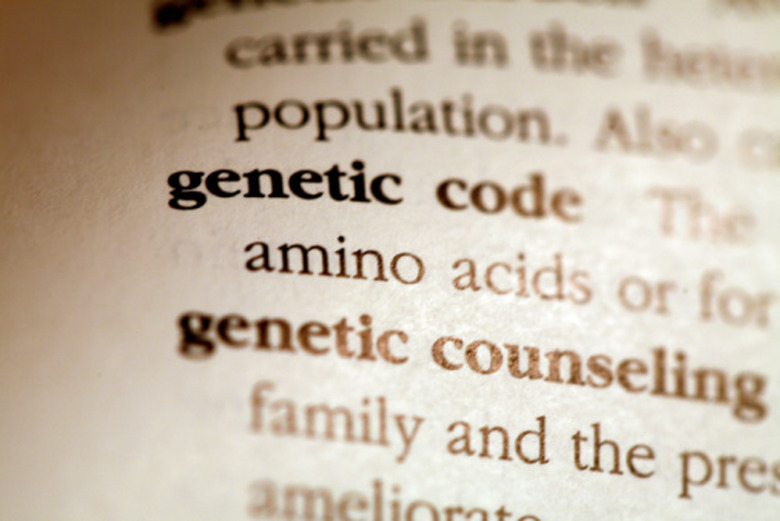What Are The Different Variants Of A Gene Called?
In diploid organisms like humans, individuals inherit two copies of each chromosome–one copy from each parent. Consequently, individuals have two copies of each gene, with the exception of genes on sex chromosomes–a male, for example, may have only one copy of a gene on the x chromosome since he has only one x. Geneticists use several different terms to describe copies of genes.
Alleles
Alleles
Different versions of a gene are called alleles. Imagine, for example, that a particular gene determines flower color in a species of flowering plant. One allele might result in purple flowers while another allele results in white flowers and a third in red flowers. In reality, of course, many traits are determined by combinations of genes (rather than by a single gene), so this kind of simple logic doesn't necessarily apply. Nonetheless, if more than one version of a gene exists in a population, geneticists refer to these different versions as alleles.
Heterozygotes and Homozygotes
Heterozygotes and Homozygotes
If an individual inherits two of the same allele, they are homozygous for that gene. If they inherit two different alleles of the gene–one from their father and the other from their mother–they are heterozygous for that gene. If they inherit only one allele of a gene, by contrast, they are hemizygous. In males of many species, the male inherits a y chromosome and hence is hemizygous for all genes on the x-chromosome. In some cases, however, the other copy of the gene has been deleted by a mutation.
Other Terminology
Other Terminology
The two different alleles inherited by an individual are sometimes called the maternal and paternal alleles or maternal and paternal copies, since one came from the father and the other from the mother. Some genes are actually expressed differently, depending on whether they are inherited from mother or father, a phenomenon called genomic imprinting. A gene that affects birth weight in humans, the Igf2 gene, for example, is actively expressed in the fetus and placenta if it's inherited from the father but silenced if it came from the mother's side.
Exceptions
Exceptions
Some species are not necessarily diploid–in other words, they may have more or fewer than two copies of each chromosome. Some species of plants, for example, are polyploid and have from three to six copies of each chromosome. Some insects like bees are haplodiploid–the sex of an individual is determined by the number of copies they have of each chromosome. In these species males develop from unfertilized eggs, so they have one copy of each chromosome while females have two. In cases like these terms such as homozygous or heterozygous are less applicable because an individual may have only one copy of each gene–or, in polyploid plants, may have multiple copies.
References
- "Genetics: A Conceptual Approach"; Benjamin A. Pierce; 2006
- Rockefeller University: Genetics Terms
Cite This Article
MLA
Brennan, John. "What Are The Different Variants Of A Gene Called?" sciencing.com, https://www.sciencing.com/different-variants-gene-called-8092322/. 24 April 2017.
APA
Brennan, John. (2017, April 24). What Are The Different Variants Of A Gene Called?. sciencing.com. Retrieved from https://www.sciencing.com/different-variants-gene-called-8092322/
Chicago
Brennan, John. What Are The Different Variants Of A Gene Called? last modified March 24, 2022. https://www.sciencing.com/different-variants-gene-called-8092322/
